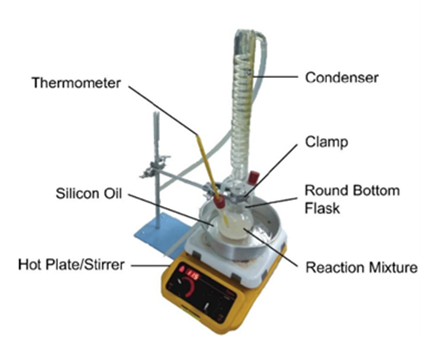Friction and Wear Performance of Lubricants Formulated with Palm Kernel Methyl Ester and Polymeric Additives in Hydrogen-Fuelled Engines
DOI:
https://doi.org/10.11113/jtse.v12.246Keywords:
Palm kernel methyl ester, Hydrogen engine, Viscosity improver, Bio-lubricant.Abstract
The transition to sustainable fuels and lubricants is critical in supporting the advancement of hydrogen internal combustion engines (H₂ICEs). Bio-lubricants derived from vegetable oils, such as palm kernel methyl ester (PKME), offer environmental advantages including renewability, biodegradability, and high lubricity. However, their inherently low viscosity poses challenges in demanding engine applications. This study investigates the use of ethylene-vinyl acetate (EVA) copolymer as a viscosity index improver (VII) in PKME-based lubricants for potential use in H₂ICEs. Tribological performance was evaluated using a four-ball tribotester and a modified pin-on-disc tester at varying EVA concentrations (2–4%), loads, and temperatures. The addition of 4% EVA enhanced the viscosity index of PKME by 61% and improved friction-reducing capabilities compared to SAE 40 mineral oil. While wear resistance remains slightly inferior, the frictional improvements indicate promising potential for PKME-EVA blends in hydrogen engine lubrication. Further formulation optimization is recommended to enhance anti-wear performance for reliable H₂ICE operation.
References
Singh, S., Bathla, V. K., Mathai, R., & Subramanian, K. A. (2021). Performance evaluation of hydrogen-fuelled internal combustion engine. In Advances in IC Engines and Combustion Technology: Select Proceedings of NCICEC 2019 (pp. 177–192). Springer Singapore.
Huynh, D. N. L., Nguyen, T. H., Nguyen, D. C., Vo, A. V., Nguyen, D. T., Nguyen, V. Q., & Le, H. C. (2024). Using hydrogen as potential fuel for internal combustion engines: A comprehensive assessment. International Journal of Renewable Energy Development, 14(1), 83–103.
Shadidi, B., Najafi, G., & Yusaf, T. (2021). A review of hydrogen as a fuel in internal combustion engines. Energies, 14(19), 6209.
Afifah, A. N., Syahrullail, S., Azlee, N. I. W., & Rohah, A. M. (2021). Synthesis and tribological studies of epoxidized palm stearin methyl ester as a green lubricant. Journal of Cleaner Production, 280, 124320.
Yahaya, W. M. A. W., Dandan, M. A., Samion, S., & Musa, M. N. (2018). A comprehensive review on palm oil and the challenges using vegetable oil as lubricant base-stock. Journal of Advanced Research in Fluid Mechanics and Thermal Sciences, 52(2), 182–197.
Opia, A. C., Hamid, M. K. A., Syahrullail, S., Ali, A. I., Johnson, C. N., Veza, I., et al. (2022). Tribological behavior of organic anti-wear and friction reducing additive of ZDDP under sliding condition: Synergism and antagonism effect.
Azman, N. F., Samion, S., Moen, M. A. A., Abdul Hamid, M. K., & Musa, M. N. (2019). The anti-wear and extreme pressure performance of CuO and graphite nanoparticles as an additive in palm oil. International Journal of Structural Integrity, 10(5), 714–725.
Dandan, M. A., Samion, S., Yahaya, W. M. A. W., & Hadi, F. (2019). Tribological analysis of modified RBD palm kernel containing anti-oxidant additive using four-ball tribotester. Journal of Advanced Research in Fluid Mechanics and Thermal Sciences, 56(2), 157–164.
Ma, M., Song, J., Dong, Y., Fang, W., & Gao, L. (2023). Structural and thermodynamic properties of bulk triglycerides and triglyceride/water mixtures reproduced using a polarizable coarse-grained model. Physical Chemistry Chemical Physics, 25(33), 22232–22243.
Jiang, F., Wang, H., Ye, Z., Pang, S., Pu, W., & Xu, B. (2022). Thickening mechanism of water-soluble polymer in the presence of Ca²⁺ and Na⁺. Polymer Bulletin, 1–13.
Chen, M., Zheng, M., Zhang, L., Xu, Y., Zhang, X., & Chen, W. (2023). Correlation between structural evolution and rheological properties for polycarbonate in the molten state. Journal of Applied Polymer Science, 140(5), e53418.
Yahaya, A., Samion, S., & Abdul Hamid, M. K. (2023). Surface modification effect of aluminium block on the tribological performance for super olein. Industrial Lubrication and Tribology, 75(9), 993–1001.
Aiman, Y., & Syahrullail, S. (2022). Frictional and material deformation of aluminium alloy in cold forging test under different derivatives of palm oil lubrication condition. Journal of the Brazilian Society of Mechanical Sciences and Engineering, 44(9), 396.
Marušić, K., Pezić, E., Matijaković Mlinarić, N., Dubček, P., Sancho‐Parramon, J., Kralj, D., & Mihaljević, B. (2023). Green nanocoatings prepared by crosslinking self‐assembled fatty acids on metals. Small, 19(30), 2301104.
Song, Y., Fukuzawa, K., Hirayama, T., Yamashita, N., Yamada, N. L., Itoh, S., et al. (2023). Effects of polarity of polymers on conformation and lubricating film formation of adsorbed films. Macromolecules, 56(5), 1954–1964.
Uniyal, P., Gaur, P., Yadav, J., Khan, T., & Ahmed, O. S. (2024). A review on the effect of metal oxide nanoparticles on tribological properties of biolubricants. ACS Omega, 9(11), 12436–12456.
Mannan, A., Pozzebon, M. L., Daniel, W. J., & Meehan, P. A. (2023). Temperature effect on load distribution, friction, and wear of a grease-lubricated spherical roller bearing (SRB). Tribology Transactions, 66(1), 144–161.
Li, W., Guo, F., Liu, C., & Ma, Z. (2023). Experimental study on the influence of stearic acid additive on the elastohydrodynamic lubrication of mineral oil 2137. Lubricants, 11(10), 446.
Wang, X., Chen, G., Huang, Y., Ma, Z., Yin, X., & Chai, C. (2024). Tribological behavior and mechanism of Mo₂Ti₂C₃/polyimide composite films under dry friction condition. Polymer Composites, 45(9), 7979–7990.
Yahaya, A., Samion, S., & Abdul Hamid, M. K. (2023). Surface modification effect of aluminium block on the tribological performance for super olein. Industrial Lubrication and Tribology, 75(9), 993–1001.

Downloads
Published
How to Cite
Issue
Section
License
Copyright of articles that appear in Journal of Transpot System Engineering (JTSE) belongs exclusively to Penerbit Universiti Teknologi Malaysia (Penerbit UTM Press). This copyright covers the rights to reproduce the article, including reprints, electronic reproductions or any other reproductions of similar nature.
Disclaimer: The views and opinions expressed in the articles are those of the authors and do not necessarily reflect the official policy or position of the JTSE. Examples of analysis performed within are only examples and they should not be utilized in real-world. Assumptions made within the analysis are not reflective of the position of any JTSE entities.

















